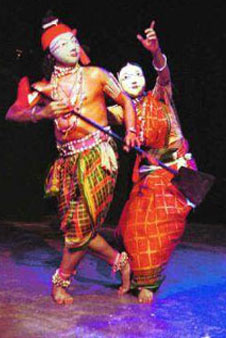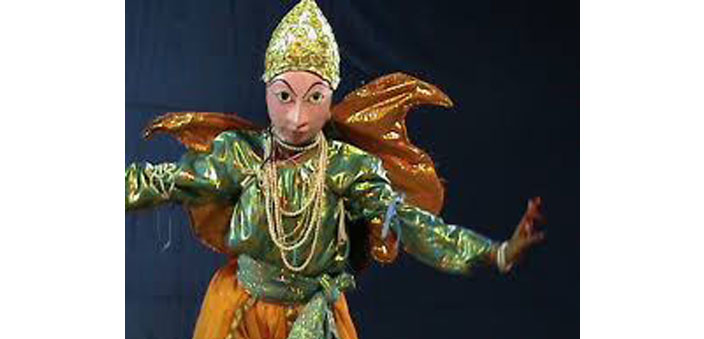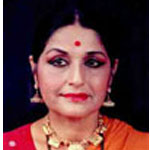The three forms known by the generic term ‘Chhau’ belong to the eastern area of India, spread over the three states of Orissa, Bihar and West Bengal. The term Chhau gets divided into three distinct art practices – Seraikela Chhau from Bihar, Purulia Chhau from West Bengal and Mayurbhanj Chhau from Orissa. This vast area from which these art forms are born is full of diverse manifestations in ecology, geographical and social environments and the multiplicity of ethnic types of people. The area is rich in tribal culture.
These three forms, however, are not identical in their form as well as content, yet all belong to the group of arts which can be best described as ‘dramatic spectacle’! Though each form has its own distinctiveness, all the three share certain major aspects which are similar.
Interpretations of Chhau
There are different interpretations for Chhau. Some scholars insist that the term rises out of the Sanskrit word ‘Chhaayaa’ which means ‘shadow’, which may be linked to a very special feature of Chhau which is the mask that is worn over the face.
But a more plausible interpretation can be given from the Oriya language where the three colloquial terms are:
If we look at these three meanings, it immediately becomes clear that all the three have a very definite martial link, and thus we can and should interpret Chhau as a ‘war dance’. This interpretation is strengthened by the strong martial overtones in the technique itself. It appears that the initial inspiration for Chhau has come from the war-fields. The basic steps and gaits (stylised walking) that are used in this spectacle, point to a pertinent fact that Chhau, in general, can be termed as a ‘dance’ also. Both Saraikela and Mayurbhanj schools fully complement the view that Chhau is a ‘Martial Art’. To correctly perform the basic steps and gaits, the performer has to hold a sword in the right hand and a shield in the left.
Here, one can draw a parallel with the strong military tradition of Kerala, which made them strong military nations. The sword in Oriya tradition was extremely heavy in weight, which required tremendous physical strength and fitness. To achieve this, special exercises and massage were prescribed. Even today, these exercises are performed by the Chhau performers to discipline their bodies to perform the typical leaps, jumps and twists.
Like any discipline, Chhau, in general has the three distinct aspects – nritta, nritya and natya. The basic nritta aspect, which in effect dominates the Chhau technique and performance, consists of basic steps (ufli) and gaits (topka). Topka in the colloquial Oriya means a springy or bouncing gait. Both ufli and topka have a very strong element of ‘imagery’. It must be remembered that both, ufli and topka are not stances or gestures, but are in the nature of cadence of the movements of the body. Thus, it is not possible to freeze these at a given particular time in a static pose.
The uflis are inspired from:
A third aspect of Chhau technique is bhangi which is a unit of dance which is created by synthesising more than one topka and ufli according to the demand of the theme and the creative imagination of the artiste.
Each of the three terms have a very distinct connection with allied forms of their individual region and also with each other. Thus, in the context of Chhau, it would be fruitful to look at all the three as regional manifestation of the region from which each has sprung. The Saraikela and Mayurbhanj have many points of contact in their performance technique and musical accompaniment. However, Parulia and Saraikela have the common element of masks, but not in Mayurbhanj.
Saraikela Chhau (Orissa)
A very important aspect of this practice is the direct involvement and patronage of the princes of the state. This form is invariably performed during the chaitra parva (the spring festival), and during this festival, the members of the royal family and commoners mingle without any caste or rank consciousness; it is truly a people’s festival.
The origins of Saraikela Chhau are hidden in the mists of ancient history. But the chaitra parva, which is full of traditional rituals is celebrated with due respect for the tradition. It is from the chaitra parva that the Chhau dance has evolved.
The presiding deity of Saraikela Chhau is ‘Ma Paudi’, a form of goddess Kali who is propitiated with great pomp and veneration.
Unlike other classical Indian dance practices, in Chhau the dancer’s feet and legs are the most expressive parts of the body. Instead of the hastas (hand gestures), the Chhau has evolved a method of communication with the movements of the legs and feet. The toes act as the centre of power which provide the spring or bounce in the movements, whereas the feet supply the rhythm to the other parts of the body to achieve expressions and moods.

The most enthralling and lyrical are those presentations which deal with birds, animals and supra-mundane beings. Some of these are mayura (peacock), baana-viddha (a deer pierced by an arrow), naabik (fisherman), Chandrabhaga (story of the maiden Chandrabhaga), phul-o-basant (flower and spring), sagar (the ocean) – in which we can very clearly discern the outward and the inner movement. In the outward movements one can discern the thematic presentation of the central focal point, but it is the inner which is spiritual, allegorical as well as philosophical.
The Chhau mask and music
The Saraikela Chhau mask is a thing of beauty. The mask is fashioned out of dark clay which is found near the banks of the Kharkei river. The artist fixes the clay model of the character on a wooden plank and lets it cool and harden. Then a muslin gauze is pasted on it with layers of paper. Upon this, once again, muslin is pasted and upon that there is one more coating of clay applied. Once dry, the mask is scrubbed and polished and coloured.
Fashioning these masks is an independent art which requires a deep study of human character. Masks of animals and birds are of special interest, for example, mayur (peacock), prajapati (butterfly), hansa (swan). The mask comes to life when worn by the dancer to suit the theme.
The musical instruments used are specially intended for outdoor performances. A huge drum called Dhumsa is played by beating it with two big sticks. Nagada, the kettle shaped drum, is shriller in sound, while the Dhol is played on both its sides. The wind instruments are Bheri, Ranasingha, Singhada (trumpets), Shehnai and Bansi. Shehnai lends a festive touch to the performance. A noteworthy feature is the use of song compositions of famous Oriya poets.


 [/column]
[/column]